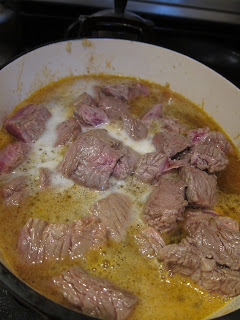Of course I had to watch this movie, on its
opening day. If there had been a way for me to watch the New York premiere, I
would have. Les Miz is one of those musicals that, when it came out in 1985,
created such a stir and struck a chord with so many, that immediately talk was
rife about the imminence of a movie version. My first exposure to the
music was through my friend, Jaime del Mundo, and I was immediately entranced
by BRING HIM HOME, I DREAMED A DREAM, ON MY OWN, STARS, and ONE DAY MORE. I vowed
to watch it one day, and watch it I did, in Toronto in 1991. The staging,
by Trevor Nunn and John Caird, did not
disappoint, and it was the first time I had seen a theater production that was
set on a revolve from start to end. I thought, how so much like a movie this
show is.
And now, we have the movie
version, which does not disappoint. Of course this is
a movie adaptation, and the material had to be edited to translate it to
cinematic terms, so purists shouldn't expect a transliteration of the musical. The most remarkable aspect of this movie though is that the
actors sang their songs live as the movie was shot, making for a more visceral
interpretation of the music. This is not the first time that music used in a movie was recorded live during the shoot (n.b. 'ROUND MIDNIGHT, or the movie that beat THE MISSION
for Oscar Best
Music, Original Score in 1987), but it is the first time to have recorded actors singing live. This technique makes the singing and acting more seamless and "real," and is most palpable in Jean Valjean’s
(remarkably played by Hugh Jackman) WHO AM I, and the soon-to-be classic, I
DREAMED A DREAM, sung by Anne Hathaway, playing Fantine. The latter number left
the audience breathless, and in tears. Shot in one take (I wonder if there were
other takes) with one camera, the number begins with Fantine prone in a
crib-like bed, having just been birthed into the lowest of her life’s lows,
when she succumbs to prostitution in order to support her daughter Cosette, and
singing the introduction of the song a
capella. She slowly rises, as the instrumental of the song is played, and
sums up her life in the heartbreaking solo. The movie audience, atypical in our
neighborhood, broke into applause after the number. The hype that this number
is enjoying in press and in social media is not hype. This is one showstopper
that will be remembered for a long, long time. I hope that after Martin Nievera
watches this movie, he will have the good sense to re-record his bastardization
of this beautiful song. Better yet, to destroy all existing copies of the
original recording. But then again, no ugly interpretation of this song will be
able to survive in anyone’s consciousness after Anne Hathaway’s masterful
version.
I
dissed Eddie Redmayne in the trailers as mukhang
bisugo and Amanda Seyfried as boses
ipis. My apologies. In the movie, they vindicate themselves quite well.
Most of the rest of the leads are good, notably Samantha Barks, who plays
Eponine without sentimentality. Russell Crowe is the odd man out in the movie.
Although a gifted actor, he is sadly a weak singer, which is all the more
highlighted by the fact that (1) all his co-actors are vocally strong, and (2)
his character is an intimidating monster of a single-minded buffoon. His
singing is truly disappointing, and at some points, sounds like it was learned
from the Vilma Santos School of Singing. I think he did what he did at the end
of his final number out of shame, not for compromising his principles, but
because of his singing.
Another
disappointment in the movie is how the songs with counterpoints (ONE DAY MORE,
A HEART FULL OF LOVE) are shot. On stage, the actors singing different parts
can be blocked in levels or by having each group take downstage at the point of
their solo. In the movie, it was quite disconcerting to see the editing from
actor to actor, or group to group in such a hasty manner.
Still,
Russell Crowe or not, faulty editing or not, LES MISÉRABLES is one movie that
will be remembered by audiences for a long time. It is not perfect, but it is
beautiful. By the way, a new song was composed for the movie, purportedly to push the story forward and to vocalize Valjean's thoughts when he adopts Cosette. But we all know that this is also to get it nominated for Best Original Song in the Oscars, right? Whatever the reason is, it is engaging, and may become a love song for some people.
P.S. The actor who originated the role of Jean Valjean in London's West End and on Broadway, Colm Wilkinson, plays the role of the kind Bishop who paves the way for Valjean to go on the straight and narrow.





